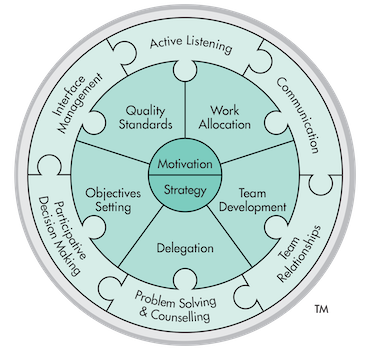Although it is widely believed that leadership skills are something people are born with, research shows that this is not the case. While there are indisputable leadership traits, leadership skills are in fact honed and acquired over time by individuals who understand their gaps and are motivated to develop and inspire their people.
Today, mismanagement is a complaint often heard from teams where expectations aren’t clearly defined; individuals aren’t developed to their full potential; or outcomes are not in line with the overall strategy of the organisation. Often this type of dysfunction flags an opportunity for leadership development. However, too frequently the individuals affected are afraid to speak up about gaps for fear of negative reviews, team conflict, or worse, termination. Our experience based on teams we have worked is that a lack of psychological safety stemming from mismanagement is one of the prevailing problems affecting team performance.
When supportive leadership is absent, or leaders lack the skills to empower and develop their people, organisational culture and performance can suffer. Take a moment to ask yourself where you will be in the next ten years. Are you planning on becoming a C-suite executive, or are you already there? To be successful as a leader, you will need to acquire the skills to help you master the art of influence, so that you, in turn, can develop leadership in others by supporting them to identify and close any learning gaps.
What is influence?
Influence can be described as the ability to affect the behaviour of others. It is measured by a leader’s ability to connect with people on an emotional level, to inspire curiosity and to ask open questions while seeking to understand each team member on an individual level. Those who master the art of influence are often skilled at tapping into the emotions that drive people's actions; this explains why in the 21st century impact is synonymous with leadership.
Types of Influence
Two types of influence are commonly used by leaders: transactional and transformational leadership.
Transactional Influence
Transactional leadership is a traditional style of leadership seen across many organisations globally. It involves leading with a top-down hierarchical structure, where upper management or people with senior management roles make decisions that flow down as directives through the various levels of the organisation. As a result, managers don't usually build personal connections; they find it challenging to affect the behaviour of their associates; and time is often spent solving ‘staff problems’.
Transformational Influence
Transformational leaders get things done by going above and beyond their calling. Transformational influence is a type of leadership that involves developing and implementing strategies and methods geared toward improving team collaboration and problem-solving. Unlike top-down organisations, where leaders frequently direct their team members via vertical structures, transformational leaders tend to remove hierarchies in their teams and support individuals to develop, grow and be accountable for outcomes, as opposed to outputs.
Becoming a Transformational Leader
Getting to know your team members and developing solid interpersonal connections is an essential factor for both first-time and experienced managers to consider during their career journey. Nevertheless, leadership itself remains a situational skill which at times requires both transactional and transformational influencing styles.
A gap analysis can be useful to show a leader the extent to which the desired behaviours of their role are displayed. Further impact can be achieved when this information is used to develop an action plan, so they can focus their development efforts on becoming a truly effective leader.
The Linking Leader Profile (LLP|360) describes 13 critical skills that need to be mastered to become a supportive leader with both transactional and transformational skills. Mastery of all 13 skills is seen in leaders able to transform a workplace from a collection of groups working together, into motivated and inspired teams with a shared vision. These skills are divided into three sub-groups: Task Linking, People Linking and Leadership Linking skills (represented by the three concentric circles in the Linking Leader Model below).

Linking Leader Model
Supportive leadership can be learned. And starting out with the right insights into your leadership behaviours may be the knowledge you need to develop from a transactional or directive leader into a supportive and transformational leader.
Learn more about how the Linking Leader | LLP360 can help you become a transformational leader HERE.